This blog explores how artificial intelligence is reshaping credit risk analytics and compliance in U.S. banking. It covers AI-driven efficiency gains, regulatory expectations, real-world case studies, and why strategic partnerships are key. Learn how banks of all sizes can leverage AI to enhance risk management and maintain compliance.
Artificial intelligence and automation are fundamentally reshaping credit risk analytics and compliance operations in the banking and financial services industry. As per reports, it is estimated over 90% of U.S. banks are actively investing in AI. Simultaneously, the regulatory requirements are also continuing to shift and evolve. As a result, financial institutions face both opportunities and challenges in implementing AI-powered intelligent risk management and compliance processes and models.
Post digitization of the banking system, the current AI transformation represents the most significant paradigm shift in the core banking systems. Therefore, the question is more about how banks and financial institutions are going to implement AI for credit risk management and compliance effectively while maintaining regulatory compliance and competitive advantage.
AI in Credit Risk Analytics
The numbers speak volumes about AI’s transformative potential. According to the McKinsey research, 78% of organizations now use AI in at least one business function, which is a significant increase from 55% in 2022.
More importantly, for credit risk applications, 20% of credit risk executives have already implemented generative AI use cases. And it is estimated that an additional 60% expecting deployment within 12 months.
We have discussed and mentioned these example a few times when we talk about the AI in risk management. AI platforms like JPMorgan Chase’s COiN and Anaptyss’ CovenAce™ showcase the transformative potential of automation in credit risk management. COiN processes 12,000 commercial credit agreements in seconds—work that once required ~360,000 manual hours annually—now completed instantly with near-perfect accuracy. Similarly, CovenAce™ enables banks to analyze, extract, and organize financial covenants with 80–85% faster processing, up to 70% cost reduction, and improved accuracy. Together, these innovations free legal, compliance, and portfolio teams to focus on higher-value strategic work, governance, and revenue generation.
Additionally, the benefits extend far beyond operational efficiency. AI-powered credit scoring models demonstrate 10-15% higher accuracy than traditional statistical models, enabling banks to make better lending decisions while expanding credit access to previously underserved populations. This enhanced accuracy translates directly to reduced credit losses and improved portfolio performance.
Understanding the Regulatory Landscape
As per federal regulators, existing laws apply fully to AI systems, with no exemption for compliance requirements. Similarly, the position of Consumer Financial Protection Bureau (CFPB) is unambiguous. The banks cannot use algorithmic complexity as a defense against providing specific adverse action reasons under the Equal Credit Opportunity Act.
Some banks are leveraging compliance requirements as competitive differentiators. Institutions that excel at explainable AI or XAI, robust model governance, and comprehensive documentation find themselves better positioned to scale AI initiatives across their organizations.
The regulatory technology (RegTech) market, projected to reach $35.41 billion by 2029. This reflects banks’ recognition that compliance automation is more than risk mitigation. It’s also about operational excellence and competitive positioning.
The Role of Strategic Partnerships in Accelerating AI Adoption
The implementation divide between large national banks and smaller regional institutions is stark and widening. JPMorgan Chase operates with a $17 billion technology budget and 450+ AI use cases in development, while only 13% of community banks have deployed AI in credit and lending activities.
This disparity creates both challenges and opportunities. Large banks achieve substantial returns—JPMorgan reports $1.5 billion in annual savings from AI initiatives across fraud prevention, trading, and operations. Meanwhile, community bankers consistently report feeling “way behind the curve” with limited resources for emerging technologies.
However, successful implementations by smaller institutions demonstrate that size isn’t destiny. Arizona Credit Union’s 70-80% loan application automation shows that focused AI implementations can deliver significant benefits with appropriate expertise and support.
The key differentiator isn’t budget size—it’s strategic approach. Real-world case studies prove that focused AI implementations can deliver transformative results with the right strategic partnerships.
For example, a U.S.-based commercial lender achieved $400,000 in annual savings using machine learning-based credit risk scoring models, dramatically improving their ability to assess creditworthiness while reducing manual underwriting costs. Similarly, another community bank flagged 100% of fraudulent transactions with a machine learning fraud detection system, eliminating losses from undetected fraud while reducing false positives that frustrated legitimate customers.
In the predictive analytics space, Anaptyss enabled a commercial lender to deploy AI/ML-based data analytics, achieving 93% accurate prediction of delinquent and written-off customers that significantly reduced credit losses.
The efficiency gains extend beyond risk management. A regional bank achieved 40% faster validation of third-party credit risk models using machine learning, accelerating time-to-market for new credit products while maintaining rigorous risk standards.
Where to Start the AI Journey
There are certain AI applications in the banking and financial services that offer the highest probability of success for initial implementations. These includes-
a. Fraud Detection and Prevention
Modern fraud schemes exploit the speed and complexity of digital transactions. AI-powered behavioral analytics can analyze transaction patterns in real-time, detecting anomalies that traditional rule-based systems miss. Banks typically achieve 0.9-1.2 year payback periods on fraud detection investments, making this an ideal starting point for AI adoption.
b. Enhanced Credit Scoring
Traditional credit scoring models rely heavily on historical credit bureau data, potentially excluding creditworthy borrowers with limited credit history. AI models can incorporate alternative data sources—including transaction history, utility payments, and cash flow patterns—to expand credit access while maintaining risk discipline.
c. Automated Underwriting
Mortgage underwriting automation can reduce processing times from weeks to hours while improving decision consistency. AI systems can analyze extensive documentation, verify income and assets, and apply complex underwriting criteria with greater accuracy than manual processes.
d. Compliance Monitoring
Anti-money laundering (AML) and compliance monitoring represent significant operational costs, with U.S. banks spending approximately $25 billion annually on AML processes. AI can reduce false positives by 80-90% while improving detection of sophisticated money laundering schemes.
The complexity of AI implementation often exceeds internal capabilities, particularly for regional and community banks. Strategic partnerships with specialized providers can accelerate implementation while managing risks. Managed services approache offers several advantages vs traditional outsourcing.
Conclusion
The question facing banking executives isn’t whether to adopt AI for credit risk analytics and compliance—it’s how to implement these technologies effectively while maintaining regulatory compliance and competitive positioning.
While major banks like JPMorgan Chase leverage massive technology budgets for in-house AI development, regional and community banks can achieve comparable results through strategic partnerships with managed services providers. Institutions partnering with specialized providers like Anaptyss can get immediate access to domain expertise, enterprise-grade infrastructure, proven compliance frameworks, and outcome-based delivery models that consistently deliver transformational results. This helps improve risk management and enhance regulatory compliance—without massive capital investments.
Ready to transform your credit risk analytics? Contact Anaptyss at info@anaptyss.com to discuss our Digital Knowledge Operations™ framework.



